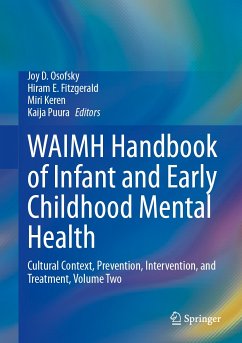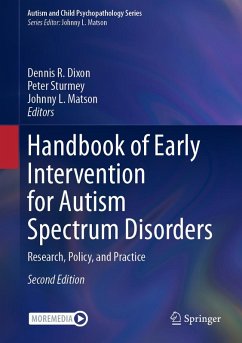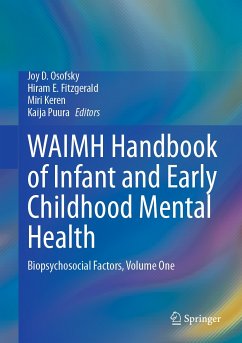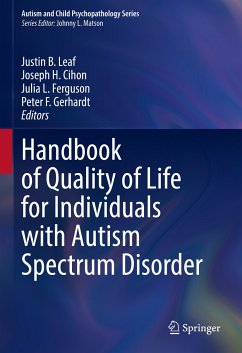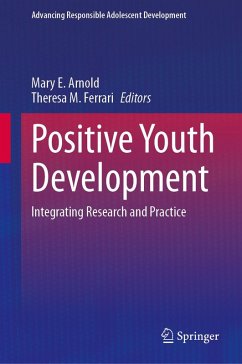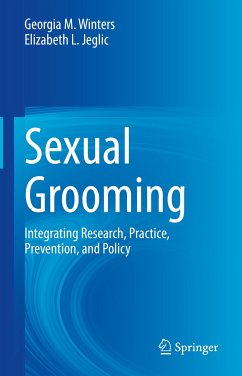
Handbook of Youth Suicide Prevention (eBook, PDF)
Integrating Research into Practice
Redaktion: Miranda, Regina; Jeglic, Elizabeth L.
Versandkostenfrei!
Sofort per Download lieferbar
167,95 €
inkl. MwSt.
Weitere Ausgaben:

PAYBACK Punkte
84 °P sammeln!
This handbook examines research on youth suicide, analyzes recent data on suicide among adolescents, and addresses the subject matter as a serious public health concern. The book explores the research on youth suicide, examining its causes, new and innovative ways of determining suicide risk, and evidence-based intervention and prevention strategies. In addition, it focuses on specific under-studied populations, including adolescents belonging to ethnic, racial, and sexual minority groups, youth involved in the criminal justice system, and adolescents in foster care. The book discusses how cul...
This handbook examines research on youth suicide, analyzes recent data on suicide among adolescents, and addresses the subject matter as a serious public health concern. The book explores the research on youth suicide, examining its causes, new and innovative ways of determining suicide risk, and evidence-based intervention and prevention strategies. In addition, it focuses on specific under-studied populations, including adolescents belonging to ethnic, racial, and sexual minority groups, youth involved in the criminal justice system, and adolescents in foster care. The book discusses how culturally informed and targeted interventions can help to decrease suicide risk for these populations.
Key areas of coverage include:
The Handbook of Youth Suicide Prevention is an essential resource for researchers, professors, graduate students as well as clinicians, therapists, and other professionals in developmental psychology, social work, public health, pediatrics, family studies, child and adolescent psychiatry, school and educational psychology, and all interrelated disciplines.
Chapters 8, 9 and 16 are available open access under a Creative Commons Attribution 4.0 International License via link.springer.com.
Chapter "Psychosocial Treatments for Ethnoculturally Diverse Youth with Suicidal Thoughts and Behaviors" is available open access under a Creative Commons Attribution 4.0 International License via link.springer.com.
Key areas of coverage include:
- Early childhood adversity, stress, and developmental pathways of suicide risk.
- The neurobiology of youth suicide.
- Suicide, self-harm, and the media.
- Assessment of youth suicidal behavior with explicit and implicit measures.
- Suicide-related risk among immigrant, ethnic, and racial minority youth.
- LGBTQ youth and suicide prevention.
- Psychosocial treatments for ethnoculturally diverse youth with suicidal thoughts and behaviors.
- Technology-enhanced interventions and youth suicide prevention.
The Handbook of Youth Suicide Prevention is an essential resource for researchers, professors, graduate students as well as clinicians, therapists, and other professionals in developmental psychology, social work, public health, pediatrics, family studies, child and adolescent psychiatry, school and educational psychology, and all interrelated disciplines.
Chapters 8, 9 and 16 are available open access under a Creative Commons Attribution 4.0 International License via link.springer.com.
Chapter "Psychosocial Treatments for Ethnoculturally Diverse Youth with Suicidal Thoughts and Behaviors" is available open access under a Creative Commons Attribution 4.0 International License via link.springer.com.
Dieser Download kann aus rechtlichen Gründen nur mit Rechnungsadresse in A, B, BG, CY, CZ, D, DK, EW, E, FIN, F, GR, HR, H, IRL, I, LT, L, LR, M, NL, PL, P, R, S, SLO, SK ausgeliefert werden.




